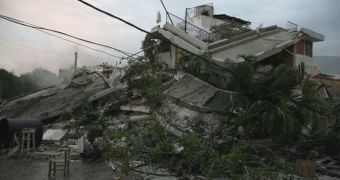Tuesday night, at 16:53 local time (2153 GMT), a massive earthquake struck the small, impoverished nation of Haiti, in the worst such event to hit the country in more than 100 years. According to the earliest reports available from the region, it would appear that the quake was massive, causing widespread damage and killing numerous people, although it's still unclear how many. The devastation was made even more massive by the lack of preparations in the small Atlantic country, and also by the fact that Haitians had no prior experience in dealing with such large tremors. Readings place the magnitude of the earthquake at about 7.0, the BBC News reports.
Regularly, in modern, industrialized cities lying on or near fracture zones, most buildings are placed atop special structures, often featuring bearings, which allow them to move back and forth in case of ground movements. The same safety mechanisms make the tallest buildings twist in tune with the tremor, thus minimizing the amount of damage that comes to them. According to the British news agency, the poverty-ridden Haitian capital Port-au-Prince had no such structures set in place, so numerous buildings collapsed under the massive strain exerted by the violent motions.
What made matters even worse for people in the capital was the fact that the tremor had its epicenter very close by, just ten miles (some 15 kilometers) away. Additionally, the earthquake was produced at a depth of just eight kilometers (or five miles). As geologists report, the shallower the depth of a tremor, the larger the amount of devastation it causes in adjacent areas. So, one could argue that everything that could have gone wrong in this scenario did go wrong. “Closeness to the surface is a major factor contributing to the severity of ground shaking caused by an earthquake of any given magnitude,” Open University planetary scientist Dr. David Rothery said.
“Furthermore, shaking tends to be greatest directly above the source. In this case the epicenter was only 15 km from the center of the capital, Port au Prince, which therefore suffered very heavily,” the expert added. This was evidenced in reports saying that the wounded and the dead remained in the streets, houses, or wherever they were trapped until as late as this morning. The health and emergency response systems in Haiti are obsolete, and extremely inefficient, and disturbing images of the victims lying all over the place, with no one to care for them, are already circling the Internet.

 14 DAY TRIAL //
14 DAY TRIAL //